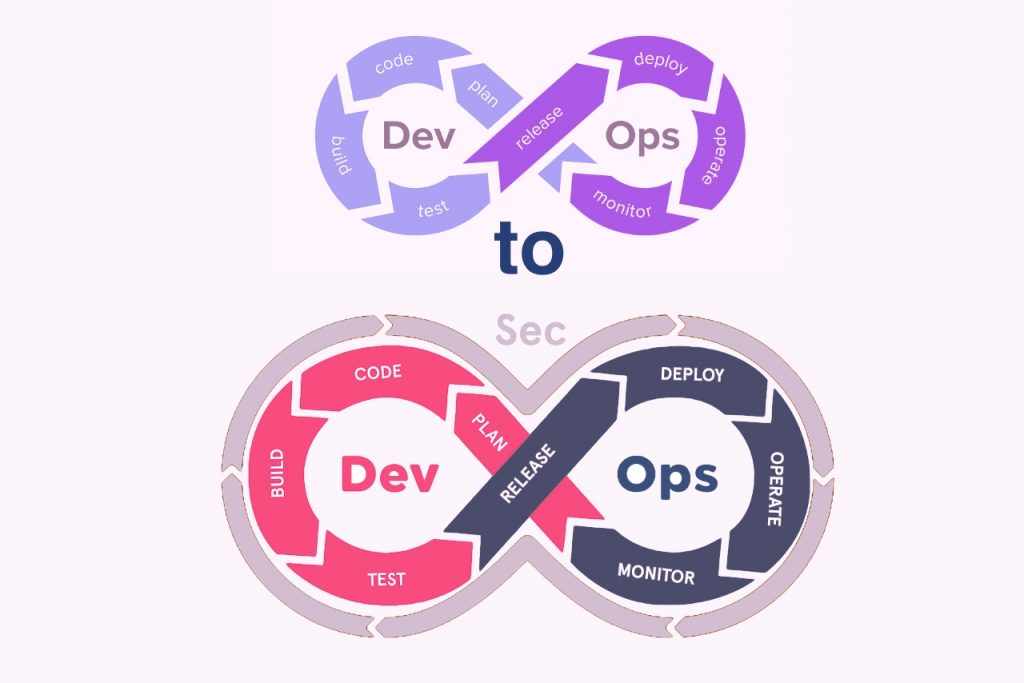That said, actually implementing DevSecOps in an existing organization is challenging. You can’t purchase a product or change one process and suddenly transition from DevOps to DevSecOps overnight. There isn’t even a specific course for you to follow. Instead, implementing DevSecOps requires you to conduct a high-level evaluation of all your DevOps processes and create a unique, comprehensive strategy for integrating better security into all of them.
How to Transform from DevOps to DevSecOps?
While this process won’t look exactly the same for every business, it can give you a good idea of what course you should follow.
Evaluation and documentation
Your first step is conducting a thorough examination of your DevOps practices and creating (or updating) documentation that reflects your current approach. The more detailed you are, the better. Throughout the next several steps, you’ll be using this documentation to look for opportunities where you can integrate better security practices.
Instill the right mentality
Like DevOps, DevSecOps isn’t just a process or a practice; it’s also a philosophy. And for that philosophy to work well for your organization, it’s important that you, your team leaders, and all your employees understand and are willing to incorporate that philosophy into their work. DevSecOps means building security into requirements, into your designs, into your code, and into your deployment stages. While high-level goals like improving development speed and improving the quality of the finished product are still important, you all must find ways to achieve these goals without compromising on security. It may take some time to get your team on board with this philosophy.
Vulnerability scanning
One of the most important steps for securing any development product is vulnerability scanning. Essentially, your developers will scan their code for inherent vulnerabilities at every stage of the delivery pipeline, including during the code writing process and before deployment. There are many tools and processes you can use for this, and no single “right” way to approach it. Instead, you’ll need to incorporate the tools and procedures that seem to work best for your team—as long as you’re proactively scanning for potential vulnerabilities.
Runtime protection
Runtime protection is another security process that lends itself well to the DevSecOps approach. In case you aren’t familiar, runtime protection requires you to secure your software against external threats whenever your application starts running. It’s something you’ll need to think about at every stage of the pipeline—not just final deployment—so you have time to notice weaknesses and make improvements gradually. Again, there are many tools, processes, and approaches that can help you here, but it’s up to you to figure out what’s best for your organization.
Service providers
Your company likely makes use of several, if not dozens of cloud service providers. Some of them will host your data. Others will be directly integrated into your final products. In any case, you’ll need to keep a close eye on them; choose your partners wisely, and pay attention to any security vulnerabilities that arise with them. If you catch these flaws early, you can easily counteract them and/or figure out a way to respond to them. You’ll also need to think about your container orchestration tools and service meshes. These work well as layers of protective insulation that stand between your product and the outside world; if implemented properly, they can provide you with even more protection throughout the development process.
Improved rules and procedures
When you come to a conflict of goals, how do you determine what takes priority? How much time should your employees be spending on security at various stages of the development process? Which employees should have access to your applications, and when? You’ll need to make a lot of decisions for your organizations, and create new rules and procedures to cement them within your team. This is going to take some time, especially if you formally document them (as you should), but ultimately, this approach will make your organization much more consistent.
Learning and Adapting
Transitioning from DevOps to DevSecOps isn’t something that can happen overnight, or even over the course of a week, no matter how much time and energy you spend on it. Instead, you’ll need to be patient, and implement these new standards and practices gradually. The more consistent you are, and the more focused you are on your bottom-line objectives, the smoother the transition will go.
